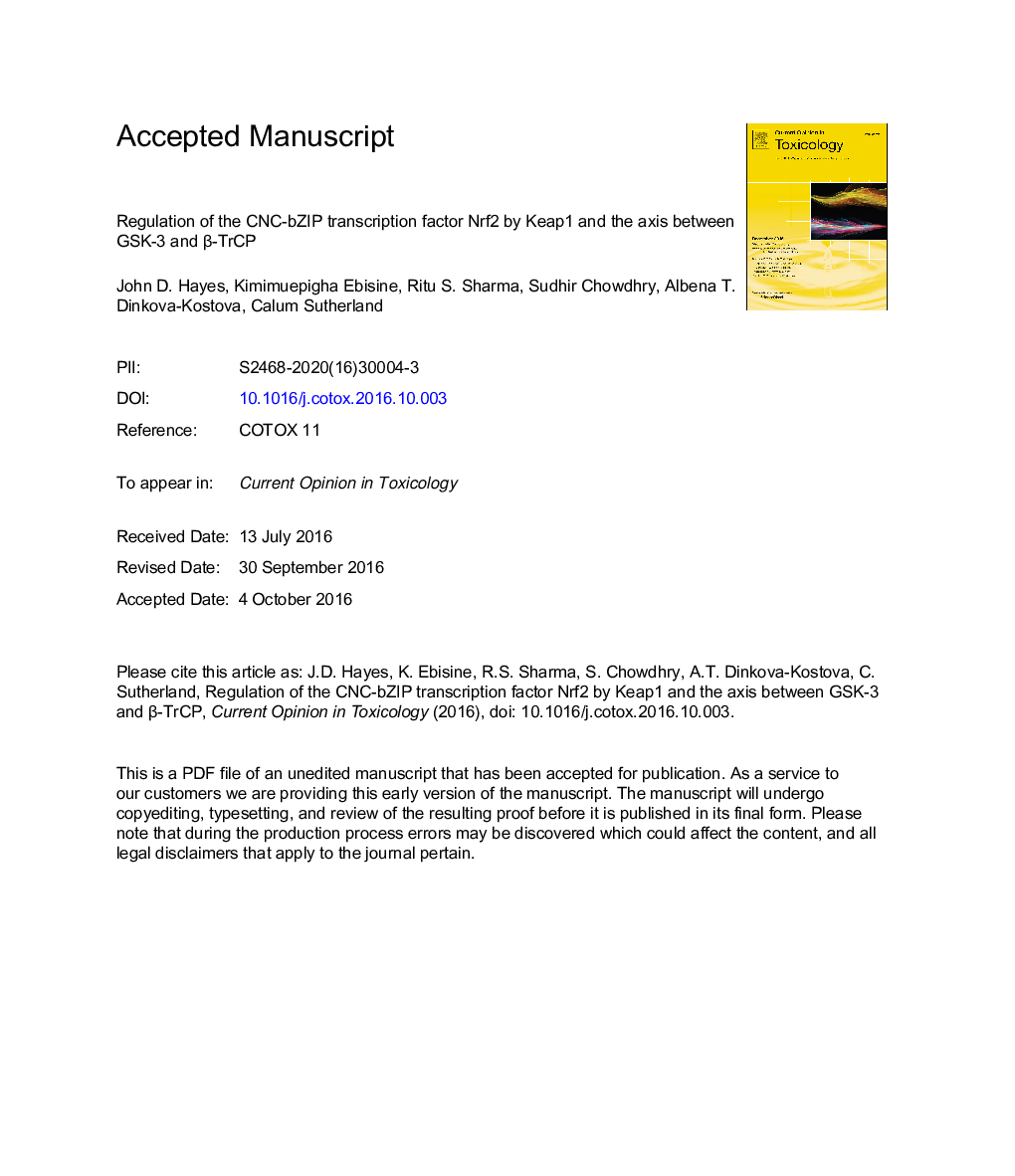| Article ID | Journal | Published Year | Pages | File Type |
|---|---|---|---|---|
| 8920301 | Current Opinion in Toxicology | 2016 | 32 Pages |
Abstract
The cartoon depicts the approximate increases in Nrf2 activity, and the resulting induction of antioxidant and detoxication cytoprotective genes (such as Gclc, Gclm, Gpx2, Hmox1, Nqo1, Srxn1 and Txnrd1) compared with metabolic genes (such as G6pdx, Me1, Mthfd2, Pgd and Tk1), that are observed in the mouse upon pharmacological inhibition of Keap1 and Pten by tert-butyl hydroquinone (tBHQ), or disruption of the Pten gene alone, or disruption of both Keap1 and Pten genes. The relative size of the arrows has been chosen to provide a rough estimate of the amount of Nrf2 protein targeted for proteasomal degradation, as opposed to the amount of Nrf2 translocated to the nucleus to support ARE-driven gene expression (or stimulate other indirect gene transactivation), and also the strength of repression through Keap1 and the PTENâPI3KâPKB/AktâGSK-3 pathway.271
Keywords
NAD(P)H:quinone oxidoreductase-1PKCSCFGSK-3PKBHMOX1NQO1PDK1CUL3PIP3Heme oxygenase-1β-TrCPp90RSKDemNEHCullin-3CUL1NF-E2 p45-related factor 2Nrf2-ECH homologyMEFsCNCFBSTBHQNrf2bZIPSFNPI3Kp70S6KECHkeap1CDDO-Imp70 ribosomal S6 kinasePKB/AKTROSp90 ribosomal S6 kinasetert-butyl hydroquinonediethyl maleateNSCLCNon-small cell lung cancerfetal bovine serumSulforaphaneantioxidant response elementphosphatase and tensin homolog deleted on chromosome 10phosphatidylinositol (3,4,5)-trisphosphatephosphoinositide 3-kinasemouse embryonic fibroblastsARE3-phosphoinositide-dependent protein kinase-1β-transducin repeat-containing proteinKelch-like ECH-associated protein 1protein kinase BProtein kinase CPtenglycogen synthase kinase-3Reactive oxygen species
Related Topics
Life Sciences
Biochemistry, Genetics and Molecular Biology
Biochemistry
Authors
John D. Hayes, Kimimuepigha Ebisine, Ritu S. Sharma, Sudhir Chowdhry, Albena T. Dinkova-Kostova, Calum Sutherland,
